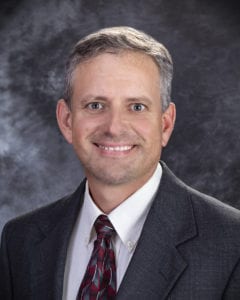

Why doesn’t the City dredge Hulah Lake?
Dredging Hulah Lake has been looked at many times since the drought of 2001-02 and has been found to not be a viable option for many reasons — with the primary one being the cost versus return on investment.
Specifically, the cost to dredge Hulah Lake would easily be in the $150 million-range, and that’s a low estimate. Other factors include a long permitting process and complications in disposing of the organic material. Silting would then reoccur over time, making this option less long term than desired.
Has the City done any studies or looked at other options?
Yes, a study was completed in 2008 that looked at accessing water at Kaw Lake, Copan Lake, reallocating flood control to water supply at Hulah and Copan Lake as well as building Sand Lake. The most cost effective option was to purchase the remaining water storage rights at Copan Lake and reallocate five percent of the flood control at Hulah and Copan to water storage.
The study also looked at accessing water at other regional lakes, including Birch and Oologah, but these lakes either didn’t have any water rights available or not a significant amount of rights to warrant further investigation.
What actions, if any, has the City taken since the drought of 2001-02?
In 2020, the City purchased the remaining storage rights at Copan Lake (2,500 acre feet, or 1 million gallons a day), which took a federal act of Congress and more than 12 years of work through the legislative process to keep the cost affordable for our customers.
The City is also implementing water reuse, which takes treated wastewater and pumps it upstream of the City’s raw water intake on the Caney River, where we can recapture and send it to the water plant for further treatment.
Reallocation of Copan and Hulah will be pursued in the future. Reuse was prioritized over reallocation because water reuse is not impacted by drought or other environmental factors that can affect water availability at Hulah or Copan lakes. Water reuse was first authorized by the state legislature in 2012, thus it was not even possible when the initial study for long term water supply was completed in 2008.
Why can’t we implement the water reuse system now?
Water reuse for drinking water is still in its infancy in Oklahoma. The State codified a law in 2012 instructing the state’s environmental agency, Oklahoma Department of Environmental Quality, to develop regulations for reuse. In 2015, the ODEQ developed the regulatory framework, and every year they continue to add provisions to this framework.
The City started investigating the feasibility of water reuse in 2016. Detailed studies completed in 2017 and 2018 confirmed its feasibility and treatment, along with environmental impacts. The City was able to take advantage of stimulus funded grants through the Bureau of Reclamation ($900,000) to construct the conveyance system (pump station and pipeline), which is anticipated to be complete mid-summer 2023.
Since 2017, the City has been communicating with the ODEQ about our water reuse application and the results of the various studies. Based on these results, the ODEQ permitted the construction of the reuse pipeline and pump station, but conditioned this approval on further study and improvements to the wastewater treatment plant, which were already in the planning stages.
Being the first drinking water reuse system in Oklahoma, and nationally one of the only surface water augmentation projects I’m aware of, the regulatory approval process will be deliberate. Bartlesville’s water reuse application will happen, but will take time, as it is a new concept for a public water system in a rich surface water area of the country.
Why didn’t the City make sure the parts needed for the Caney River Pump Station were available before taking the station offline?
The renovations at this pump station were necessary due to the cost of repairs on the existing pumps and availability of parts. The pumps were more than 50 years old and parts had to fabricated. These repair parts would cost $20,000 per pump, and the repairs would last four to six months. When the construction contract was awarded, two of the three existing pumps were out of service — we held off on repairing the pumps since this project was out for bids — and the last running pump was showing signs that the end was near.
For the renovations, the project consisted of interior and exterior structure renovations, new piping, replacing the entire electric system as well as installing new pumps with motor controls. The project was anticipated to take seven months to complete. The first four to five months would entail the structure renovations, piping and electric work, with the pump and motor control installation being one of the last items installed. When construction was authorized, in August 2021, the contractor had contracts with suppliers that included lead times to ship parts. For the motor controls, this lead time was three months, which was consistent with post pandemic fabrication on electrical equipment. The motor controls were ordered in October 2021.
Bottom line, the existing station was about to be completely out of service due to the age and condition of the equipment; hence, the need for the project in the first place. To minimize down time for the station, the renovations were authorized to begin prior to having every part in stock because we had four to five months of prep work needed prior to the installation of the new pumps and motor controls. In the 20-plus years I have been involved with these types of projects, this is the only one where the parts did not ship within a month or so of when it was anticipated by the manufacturer.
For more information about Bartlesville area water supply, usage, and water system history, see Water: Then and now.
